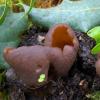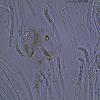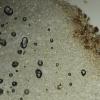
15-12-2025 15:48
 Danny Newman
Danny Newman
Melanospora cf. lagenaria on old, rotting, fallen

15-12-2025 15:54
 Johan Boonefaes
Johan Boonefaes
Unknown anamorph found on the ground in coastal sa

15-12-2025 21:11
 Hardware Tony
Hardware Tony
Small clavate hairs, negative croziers and IKI bb

15-12-2025 07:09
 Danny Newman
Danny Newman
indet. Rutstroemiaceae sp. on unk. fallen leavesMc

15-12-2025 07:05
 Danny Newman
Danny Newman
Pseudosclerococcum golindoi (det: Zotto)near Cosb

15-12-2025 11:49
 Danny Newman
Danny Newman
ITS sequences from the following two collections B

15-12-2025 12:34
 Danny Newman
Danny Newman
indet. Rhytismataceae on oak leafnear Purchase Roa

09-12-2025 12:06
 Andgelo Mombert
Andgelo Mombert
Bonjour,Je recherche l'article concernant Hypobryo

Hola amigos.
Os pongo esta Otidea que encontré el pasado sábado bajo Buxus sempervirens y Quercus ilex con suelo básico.
Ejemplares bastante jóvenes, de 2,5-3 cm de altura, con el himenio de color pardo amarillo o pardo naranja que va oscureciendo al madurar. Excípulo furfuraceo de color pardo liláceo.
Esporas con dos gútulas, excepcionalmente una, de 12,2-15,7 X 5,7-7 micras. Q=1,9(2,2)2,4 n=50
Paráfisis filiformes, multiseptadas, no excesivamente recurvadas, con contenido vacuolar de 2,8(3,7)4,4 micras de anchura.
Ascas 190-253 X 8-12.
Excípulo medular con estructura intricata, sin cristales. Excípulo ectal con estructura globulosa.
Pienso que se trata de Otidea mirabilis. Que os parece?
Saludos,
Carlos

No sé qué valor taxonómico tendrá el ápice de las paráfisis no curvadas, pero prescindiendo de ese carácter, creo que el resto encaja bien. Aquí tienes una (mala) ficha mía de hace bastante tiempo, cuando yo todavía no hacía taxonomía vital
http://www.micobotanicajaen.com/Revista/Articulos/MARibesR/Tenerife003/Otidea%20mirabilis%20221205%2014.pdf
Un saludo

Es cierto que en esta colección la curvatura de las paráfisis no es tan pronunciada como en otras recolectas y la fotografía enviada en bastanta representativa, pero también es cierto que he encontrado, menos frecuentemente, algunas con curvaturas más pronunciadas como las de la foto adjunta.
Saludos,
Carlos

I think this is the same kind of paraphyses that are in bufonia clade (and in some other species too) - although they are nor curved/hooked here, they are neither clavate nor capitate and some have a slight apical swelling on the lower side. I've mostly seen straighter and almost cylindric paraphyses on younger apothecia. The overall color and spore shape should too exclude other species than bufonia+mirabilis.
Carlos, did you observe those hyaline to light brown flabellate exudates in medulla? They are sometimes rather inconspicuous. If you have polarisation microscope (or two polarisation filters for photocamera), it would be easier to locate them (see photo).
Best regards,
Viktorie

Saludos,
Carlos

Viktorie




